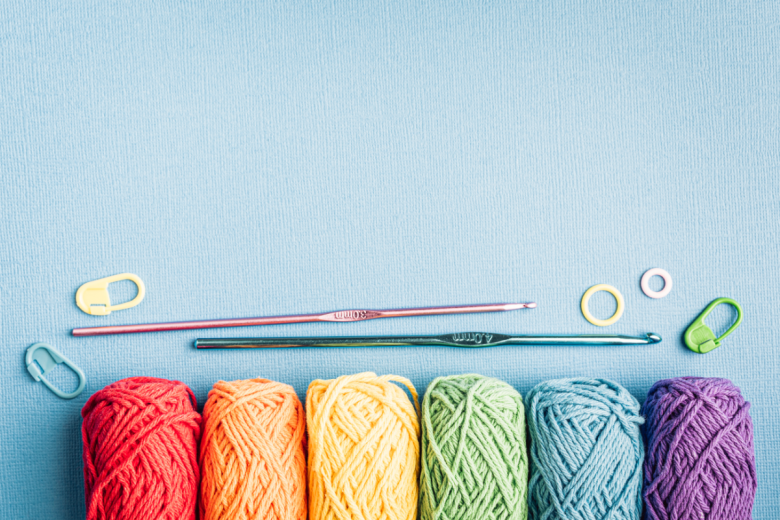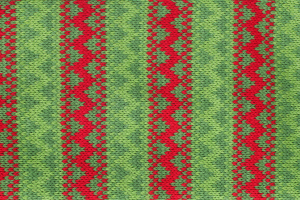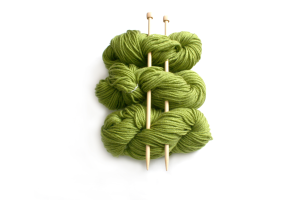Choosing the right yarn for a project can feel like navigating a maze of fibers, colors, and weights. But don’t worry—I’m here to help unravel the mystery (pun intended)! With these five tips, you’ll become a yarn pro in no time.
When embarking on any knitting or crocheting project, the type of yarn you choose can make or break the final result. Yarn isn’t just a material; it’s the soul of your creation, determining its texture, durability, and overall appeal. Whether you’re a seasoned crafter or a beginner, understanding how to pick the right yarn is a crucial step in ensuring your hard work pays off beautifully.
From the softness of natural fibers like cotton and wool to the vibrant possibilities of synthetics, the choices can seem endless. Yet, each type of yarn has its own unique qualities, making it essential to match the material to your project’s needs. Are you creating a cozy winter sweater, a delicate lace scarf, or a sturdy reusable bag? The answer will guide your decision-making process.
Beyond fibers, other factors like yarn weight, color, and even how it feels in your hands play an important role. The perfect yarn isn’t just about looks—it’s about functionality, comfort, and style. In this guide, we’ll explore the key considerations for selecting the best yarn for any project, helping you combine creativity with practicality. Let’s dive into the world of yarn and uncover the secrets to making your projects truly stand out.
Understanding the Basics of Yarn
What Is Yarn Made Of?
Yarn is essentially spun fibers, but these fibers can be natural, synthetic, or a mix of both. Natural fibers like wool, cotton, and silk are breathable and luxurious, while synthetic ones like acrylic or nylon offer durability and affordability. Knowing what yarn is made of will help you decide what suits your project best.
Different Types of Yarn Fibers
Each fiber type has unique qualities. Wool is warm and stretchy, perfect for sweaters. Cotton is lightweight, making it great for summer tops. Silk adds sheen and elegance, while acrylic is the versatile, budget-friendly workhorse of the yarn world.
Know Your Project’s Purpose
Matching Yarn to Garment Projects
If you’re knitting a cozy scarf or sweater, opt for soft and warm yarns like alpaca or merino wool. For baby clothes, go for hypoallergenic options like bamboo or organic cotton.
Yarn for Home Decor Projects
Home decor calls for sturdy, durable yarn. Chunky wool works wonders for blankets, while acrylic or recycled yarns are ideal for rugs and cushions.
Yarn Weight and Thickness
Why Weight Matters
Yarn weight impacts how thick or thin your finished project will be. A chunky yarn gives a quick, bold look, while fingering weight creates delicate and detailed designs. Check the weight recommendation in your pattern for the best results.
Popular Yarn Weight Categories
Common weights include lace, fingering, DK, worsted, and bulky. Worsted weight is a go-to for beginners, while lace weight is best for intricate shawls or scarves.
Texture and Feel of the Yarn
How to Test Yarn Texture
Feel the yarn in your hands before committing to it. If it’s scratchy or rough, imagine wearing it for hours! Softness is key for wearable projects, while tougher textures work well for accessories or decor.
Smooth vs. Textured Yarns
Smooth yarns make stitches stand out, ideal for detailed patterns. Textured yarns like boucle or chenille add depth but can obscure intricate stitches.
Color and Dye Considerations
Colorfastness and Washing
Not all yarns hold their color well after washing. Opt for colorfast yarns if your project will be laundered frequently, especially in bright or dark shades.
Choosing Colors for Complex Patterns
For intricate designs, stick to solid or subtle variegated colors. Bold, multicolored yarns can overpower the details of your work.
Budget and Yarn Cost
Quality vs. Price
While premium yarns are tempting, they can add up fast. Consider blends of natural and synthetic fibers to balance quality and cost.
Affordable Alternatives to Premium Yarns
Acrylic or recycled yarns are budget-friendly and come in a wide range of colors and textures. Perfect for practicing or large projects!
Durability and Longevity
Yarn That Stands the Test of Time
Choose high-quality fibers like wool or blends for items you want to last. Pay attention to pilling or shedding tendencies, as these can affect durability.
Choosing Yarn for High-Use Items
For frequently used items like blankets or bags, go with durable options like cotton, acrylic, or blends designed for heavy wear.
Eco-Friendly and Sustainable Yarns
Benefits of Organic Yarn
Organic yarns are chemical-free and environmentally friendly. They’re softer and safer for sensitive skin.
Popular Eco-Friendly Yarn Brands
Brands like Knit Picks or Lion Brand Yarn’s Re-Spun line offer excellent sustainable options.
Understanding Yarn Labels
Reading Weight and Fiber Content
The label holds a goldmine of information—weight, fiber type, and even recommended hook or needle sizes. Always check it before buying.
Decoding Care Instructions
Washing instructions vary widely. Machine-washable yarns are perfect for baby clothes, while hand-wash-only options work best for special projects.
Testing and Swatching
Why You Should Always Swatch
Swatching lets you test how the yarn behaves in your pattern. It’s like a test drive for your project!
Adjusting Gauge for Perfect Results
Your gauge impacts fit and size. If your swatch doesn’t match the pattern, adjust your needle size.
Yarn Availability and Accessibility
Local Yarn Stores vs. Online Shopping
Local stores let you feel the yarn, while online shops offer broader choices. Weigh your priorities to decide.
Finding Rare or Specialty Yarns
Specialty yarns might require digging into niche shops or international suppliers. Keep an eye on shipping costs.
Blended Yarn Options
The Benefits of Blended Fibers
Blended yarns combine the best of both worlds, like wool for warmth and acrylic for durability. They’re versatile and affordable.
When to Choose a Blend Over Pure Fiber
For everyday items, blends are often more practical than pure fibers, especially when care and budget are concerns.
Seasonal Yarn Choices
Warm Yarns for Winter Projects
Thick, cozy fibers like alpaca or wool are perfect for staying warm. Don’t forget chunky yarn for fast projects!
Lightweight Options for Summer
Cotton and bamboo are airy and light, keeping you cool even in the heat. Great for summer tops or shawls.
Allergen-Friendly Yarns
Hypoallergenic Fiber Choices
For sensitive skin, try bamboo, cotton, or specially treated wool. They’re gentle and non-irritating.
Avoiding Irritation and Discomfort
Always check for allergens before starting your project. The right yarn can mean the difference between comfort and itching!
Choosing the perfect yarn might seem overwhelming, but following these tips will simplify the process. Consider the project, texture, budget, and durability when making your choice. Whether you’re knitting a scarf or crocheting a blanket, the right yarn will bring your vision to life.
Remember, the journey of creating something beautiful starts with the right foundation, and in the world of fiber arts, that foundation is your yarn. By taking the time to evaluate your project’s specific needs and aligning them with your personal preferences, you’ll not only enjoy the process but also end up with a result you can be proud of.
Don’t be afraid to experiment with different yarns as you grow in your crafting journey. Sometimes, stepping out of your comfort zone can lead to unexpected and delightful results. Swatching and testing yarns before diving into a full project can also save you time and frustration, ensuring the finished piece meets your expectations.
Ultimately, yarn selection is as much an art as the project itself. The more you explore, the better you’ll understand which materials and textures resonate with your style. With these tips in hand, you’re equipped to navigate the vast world of yarn with confidence and creativity. Now, grab your hooks, needles, or looms, and start turning that perfect skein into a masterpiece!




